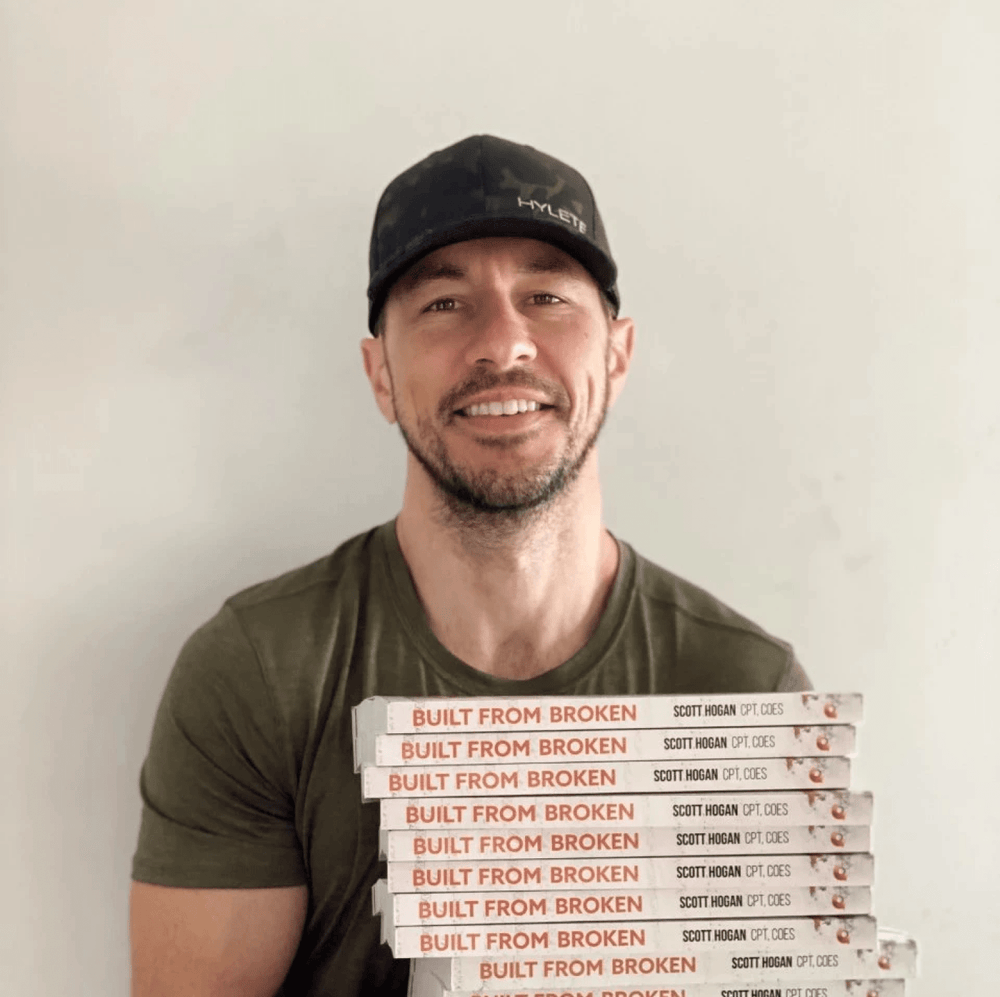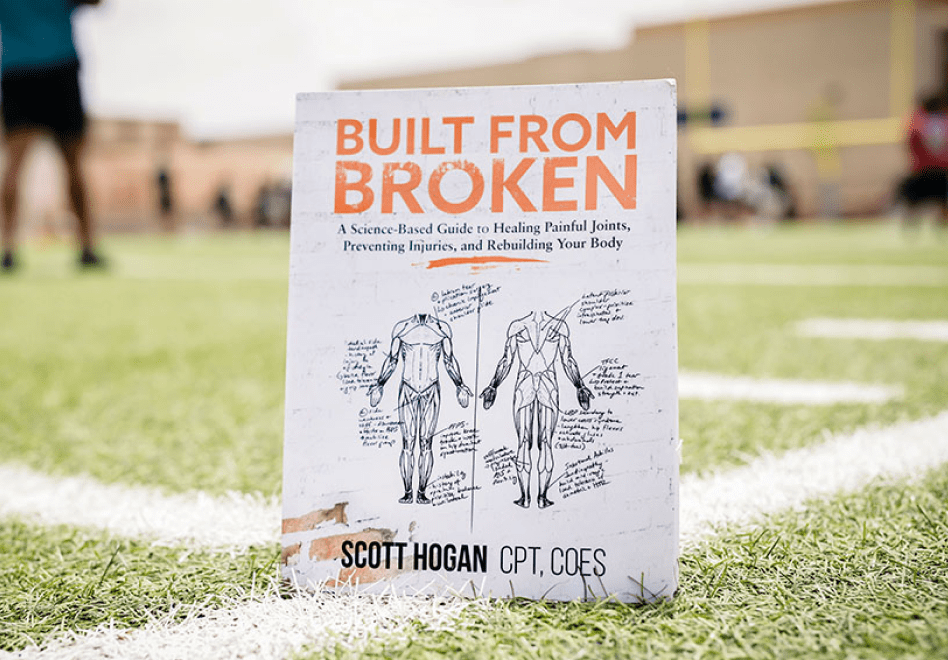
Be built (to last).
The right supplements can help you recover naturally and build a resilient body.

Supplement Quiz
Take this short quiz to discover the perfect supplements for your needs and goals.
About SaltWrap

Built from Broken
Get the best-selling book from SaltWrap founder, Scott Hogan, and start rebuilding today.
The Brutal Truth About What Is Holding You Back: How to “Remove the Thorn”
by Scott Hogan , ACE-CPT , COES
In Michael Singer’s classic book, The Untethered Soul , he tells the story of a woman who gets a thorn in her arm.
The pain this woman experiences from the thorn is electric and debilitating. But for fear of removing it, she avoids taking the thorn out. When she sleeps, every movement causes searing pain as her injured arm rubs against the bed. So she builds a contraption to shield the thorn.
During the day, she enjoys sports and has active hobbies. But her fear of the thorn getting bumped is crippling. So she builds a protective brace to ensure the thorn isn’t hit or further aggravated. She tells herself she is able to sleep well and do the activities she loves because she is able to work around the thorn.
But what she has really done is constructed an entire life system around avoiding the thorn.
The thorn is the one thing preventing her from living a genuine, boundless life. The worst part is that she believes she is addressing the problem. But she is doing the opposite.

Constraint Theory in Addressing Trauma
Everyone has one primary limiting factor when it comes to their physical health and mental fitness.
A weak link in the chain, that if repaired, would strengthen the entire chain.
This is especially evident in your kinetic chain — the way your body’s segments coordinate to produce movement. This primary constraint might manifest as a movement restriction, an unstable joint, or an old injury you’re wary of re-aggravating. The latter often presents the most leveraged opportunity.
The idea of avoidance behaviors around the most painful limitation transcends physical fitness. It’s a fundamental principle of trauma-based psychological study.
Psychological trauma has much to teach us about handling physical trauma. After all, there’s no such thing as purely physical trauma — there's always a psychological component. Our minds and bodies are not really separate entities, but more like co-dependent parts in a system.
Whether you’re overcoming a specific physical constraint or one that is more psychological and based on internalized beliefs, there are two key concepts to understand. Armed with this mental model, you can do what the woman in Michael Singer’s story couldn’t do — remove the thorn .
First, it is important to understand what trauma is (and isn’t).
As author Peter Levine outlines in Walking the Tiger , trauma “isn’t what happens to us, but what we hold inside in the absence of an empathetic witness.”
It’s what we internalize from the event. The meaning we assign to it. And in this context, empathy is primarily referring to cognitive empathy — having an understanding of the thoughts and feelings of another person (or our past self).
Connecting back to our friend with the thorn in her arm, the problem isn’t the thorn, but her reaction to it. And her avoidance of the hard truth that if she addressed the thing holding her back, as uncomfortable as it would be in the moment, it would relieve her of a future lifetime of pain and limitation.
Second, understanding how refractory periods work is critical to understanding how negative experiences, physical trauma, and fear are converted into internalized beliefs — and even galvanized personal traits.
Reactions, Refractory Periods, and How Traits Are Developed
A refractory period describes how long it takes for us to respond, adjust, and adapt to a difficult experience.
No one outlines this better than mindset expert, Dr. Joe Dispenza:
“If you don’t know how to control your emotional reactions and there’s a refractory period, and you let that emotional reaction linger for hours or days, it turns into a mood. So you say to someone, ‘What’s wrong with you?’ The person says, ‘I’m in a mood.’ Then you say, ‘Why are you in a mood?’ They say, ‘Well, this thing happened to me five days ago and I’m having one long emotional reaction.’ If you keep that refractory period going for weeks and months, you’ve developed a temperament. If you keep that same refractory period going on for years, it’s called a personality trait.”
The implications of this process are startling, to say the least.
It means that much of what you see as your core personality is the result of how you responded to past events.
It also means that if you possess “traits” or beliefs that are limiting your ability to live fully (or express yourself fully through movement), you need to do some digging. And unfortunately, it’s not as simple as removing a thorn.
It starts with being brutally honest with yourself and continues by reframing the story of what happened and what it means.
The line of questioning below can help you discover your primary constraint and address it as your own “empathetic witness.”
Removing the Thorn: How to Find and Address Your Primary Constraint
Start by asking yourself the first question, then give your subconscious mind time to chew on it.
-
What is the one thing holding you back?
After a day or so, revisit the list of questions below. An obvious issue might surface. Or, maybe it will be a general feeling that something is bubbling up from the bottom of your brain, slowly taking form. If so, give yourself some quiet time and space to expand on these answers.
-
What is the story you are telling yourself about that?
-
What are the primary feelings attached to this story that you are experiencing?
-
Now, without feelings, what are the objective facts of the situation?
And finally, the most difficult question to answer:
-
What is a more powerful story that you could tell, based on the facts, that would get you what you want?
The Final Step: Reframing the Story
As I was finishing this article, something ironic and serendipitous happened. The draft had been sitting on my computer for a few weeks. Because I felt like something was missing.
Then, while chatting with our friend and renowned fear expert, Tony Blauer , the conversation took an unexpected turn. I shared a story about a recent experience that was bothering me.
It involved me getting into a dangerous situation in the ocean and nearly drowning.
I had been carrying around a lot of shame and guilt because I had also put someone I care about at risk.
As I recounted what happened, Tony retold the story back to me, but with a completely different frame of reference. He held up the same sequence of events in front of me like a mirror, then challenged me to look at it from a completely different perspective. One that was more empowering and didn’t have my personal baggage attached to it.
It completely caught me off guard. And it flipped my thinking upside down.
You can engage the line of thinking outlined above to understand, investigate, and reframe the story in your head about what is holding you back. But often you need a third party to step in as that empathetic witness.
Sure, it’s nice to be understood — but the real power of this final step comes into play when someone else holds up the proverbial mirror, reflecting back what is right in front of you, but you can’t yet see.
Founder: Scott Hogan

I created SaltWrap to bring together the most practical ideas in therapeutic sports nutrition, corrective exercise, and functional fitness — with the goal of keeping you (and myself) strong, mobile, and built to last.
I've worked as an A.C.E. Certified Personal Trainer, Orthopedic Exercise Specialist, and nutritional supplement formulator.
But more importantly — I've spent most of my life battling injuries, joint pain, and just being plain beat up. So I know what it's like to struggle toward fitness goals.
SaltWrap is here to push you through injuries, setbacks and perceived physical limitations. To a place beyond what you think you're capable of. Sign up here to stay in the loop.
Learn more about my best-selling injury prevention and recovery book, Built from Broken.







